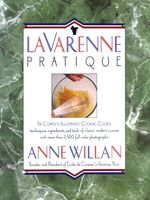Advertisement
Drying
Appears in
By Anne Willan
Published 1989
Drying is the oldest form of food preservation, and dried foods, including rice, nuts, and legumes, still form a vital part of the modern diet. Traditional drying techniques depend on the forces of nature - sunlight and shade, air temperature and humidity—and require considerable skill. If food dries too slowly, microorganisms can grow; if it dries too fast, moisture can be trapped inside, spoiling the food.
Drying can be done in the open air, under glass or indoors. The food is stacked on racks with enough space between to allow air to circulate. A light netting or cheesecloth cover can be employed to protect food against bugs and debris, but it should not touch the food. Most commercially dried fruits are sun-dried in hot, dry climates. The process is particularly suited to fruits high in acid and sugar, like apples, apricots, citrus peel, plums, figs and dates.


